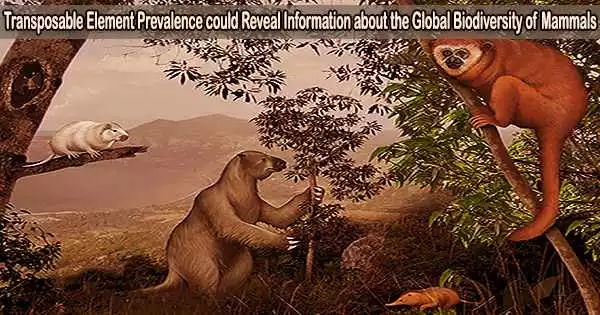Transposable elements (TEs) genes, which can change their position within a genome, create or reverse mutations, and thus alter a cell’s genetic identity, have been identified as a crucial area of study to help unravel the evolutionary process of mammals and to better understand biodiversity. This is according to an international scientific project that compares the genomes of 240 living species of mammals.
Stony Brook University’s Liliana M. Dávalos is a collaborator in the analyses of TEs for the project.
Two new papers, one published in the current issue of Science, and the other in Molecular Biology and Evolution, highlight the findings.
Mammals have evolved to adapt to almost every environment on the earth over the last 100 million years. The Zoonomia Project, of which Dávalos is a scientific contributor, has cataloged the diversity in mammalian genomes by completing comparative genomic DNA sequences from the 240 species. The team, which consists of over 150 experts from different countries, released the results of a multi-year comparative genomic analysis in a paper published in Science.
Dávalos researches the biological processes that support biodiversity as well as how biodiversity evolves over time. She teamed up with David Ray and his lab at Texas Tech University to qualitatively analyze the dynamics of TEs.
The paper describes the TE repertoires of 248 placental mammals. TEs account for a sizable fraction of mammalian genomes, yet there are significant differences between species.
Determining how many transposable elements of each kind are in each species is key to figuring out how transposons contribute to biodiversity. It seems simple to relate these counts to the number of species or their ecology, however that is misleading.
Liliana M. Dávalos
The scientific team emphasizes how difficult it is to simply link TEs to biodiversity. Additionally, because they can migrate around the genome, TEs have the potential to either enhance or hinder biodiversity.
“Determining how many transposable elements of each kind are in each species is key to figuring out how transposons contribute to biodiversity. It seems simple to relate these counts to the number of species or their ecology, however that is misleading,” explains Dávalos, Professor of Conservation Biology in the Department of Ecology and Evolution, and a co-author of the paper.
“Some species , like bats and whales, believe it or not are more closely related to each other than to others, such as bats and primates, so we must factor this related into our statistics within the comparative genomic mammalian analyses.”
In the mammalian group, the researchers found more than 25,000 TE sequences, with some mammals having significant amounts of TEs in their genomes, measured over time for each species. The average was approximately 45 percent
Overall, they concluded that “considering the wide-ranging effects that TEs impose on genomic architecture, these data are an important resource for future inquiries into mammalian genomics and evolution and suggest avenues for continued study of these important yet understudied genomic denizens.”
The authors of the Molecular Biology and Evolution research employed fresh statistical methods for determining bat genome sequences created by Dávalos to discuss the position of bats in relation to TEs in mammals.
According to the lead author, Nicole Paulat, a graduate student in the Ray Lab, the research team found bats uniquely have more events involving TE transfers from one species to another.
An significant discovery on how numerous bat species have been found to host a variety of, sometimes hazardous, viruses is that one route that may explain such excess transfers is through viruses.
Both papers using data from the Zoonomia Project show that TEs are highly active across the genomes of the majority of mammal species, and as a result, future research focusing on TEs may help address questions about mammalian biodiversity all over the world.
Further explanations about how and why TEs alter the DNA of mammals, disrupting evolutionary processes and/or the emergence of illness, may also be offered by such study.
















